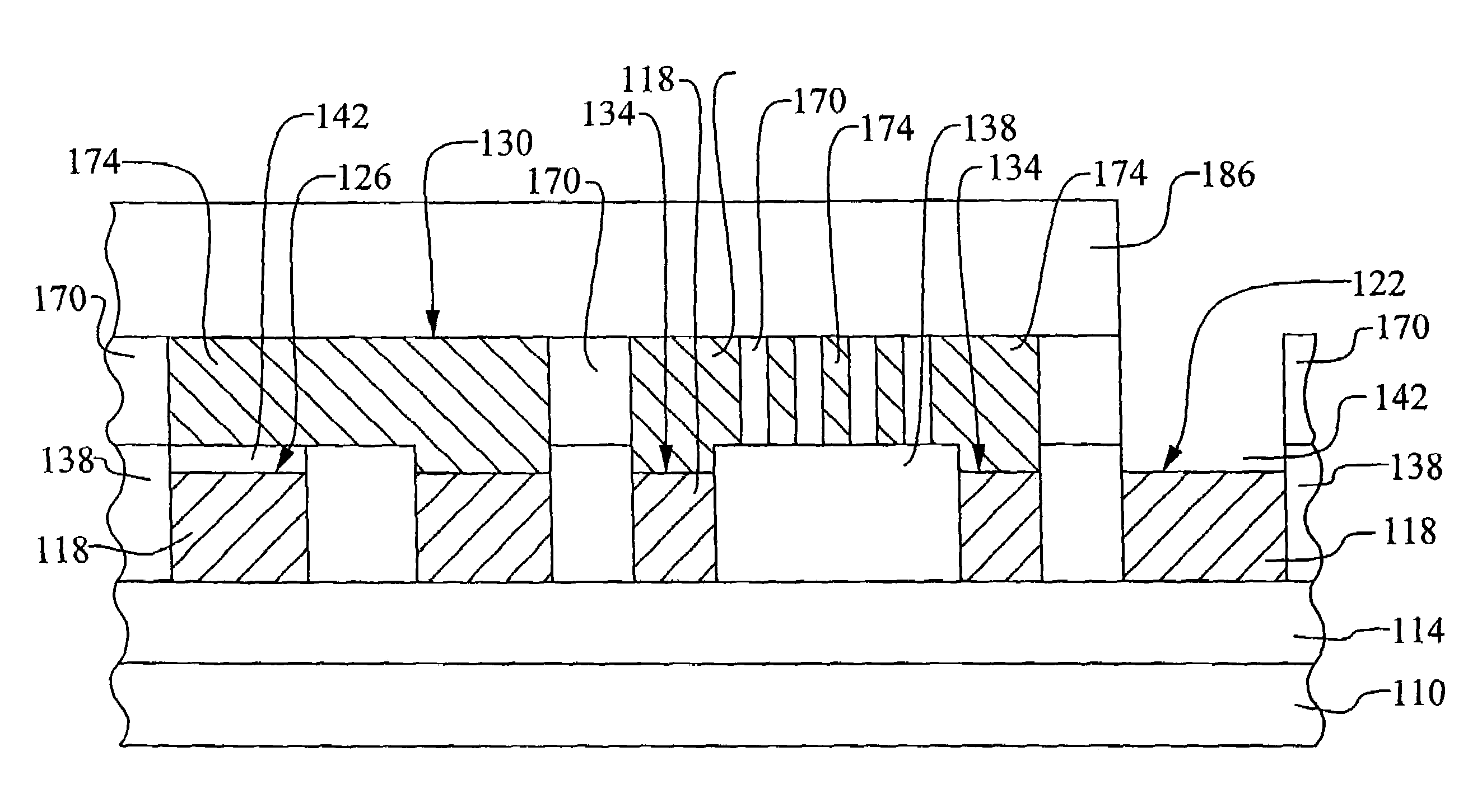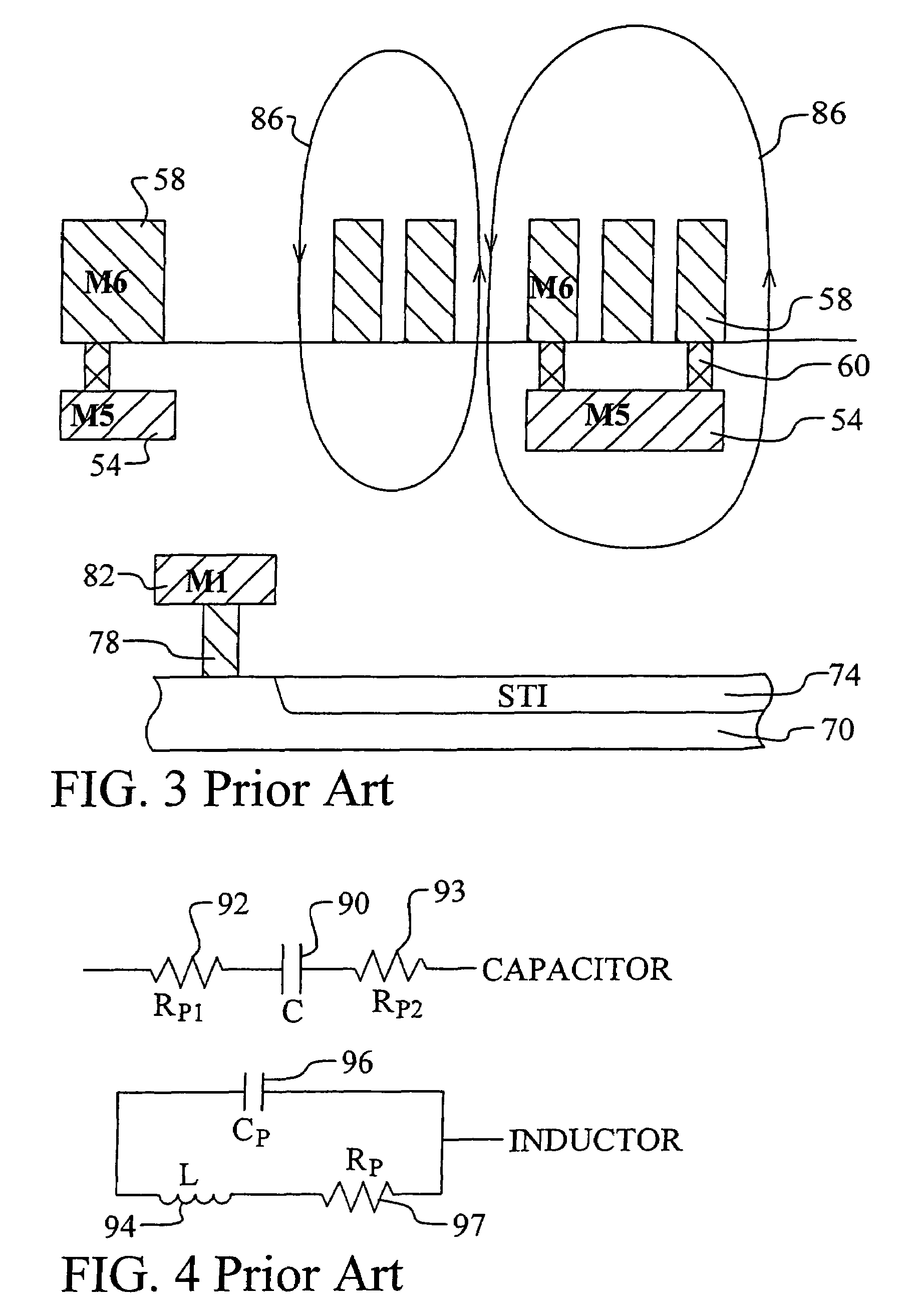Capacitor and inductor scheme with e-fuse application
a technology of capacitors and inductors, applied in the direction of capacitors, semiconductor/solid-state device details, capacitors, etc., can solve the problems of circuit malfunction, large chip area of devices, interference between capacitors/inductors and other parts of the circuit, etc., and achieve the effect of improving parametric performan
- Summary
- Abstract
- Description
- Claims
- Application Information
AI Technical Summary
Benefits of technology
Problems solved by technology
Method used
Image
Examples
first embodiment
[0032]In the first embodiment, the top metal level 118 is defined using a deposit / etch process. In this embodiment, the top metal level 118 is deposited overlying the insulating layer 114. The top metal level 118 may be deposited using, for example, physical vapor deposition (PVD) or sputtering. Further, the top metal level 118 may comprise aluminum, copper, or an alloy of aluminum and copper. Further, the top metal level 118 may comprise a series of layers. For example, a barrier layer such as titanium nitride may be formed over or under an aluminum / copper layer to create the entire top metal level 118.
[0033]Referring now to FIG. 6, as an important step in a deposit / etch sequence, the deposited top metal level 118 is patterned. For example, a photoresist layer, not shown, may be coated overlying the metal level 118. The photoresist layer is then exposed to actinic light through a mask and developed. The remaining photoresist layer is then used to mask the metal level 118 during a m...
second embodiment
[0043]Referring now to FIGS. 12 through 14, the invention is illustrated. In this case, a damascene process may be used to define the top metal level and the RF metal level. If copper is used for the metal levels, then it may be necessary to use a damascene process technique to define these metal level since it is very difficult to precisely etch copper.
[0044]In this second exemplary embodiment, the step of defining the top metal level 118 comprises, first, depositing the top level dielectric 138 overlying the substrate 110. The top level dielectric 138 may comprise a first passivation layer. The top level dielectric 138 is patterned to form trenches. The top metal level 118 is deposited overlying the top level dielectric 138 and filling the trenches. The top metal level 118 is then planarized. This planarization may comprise, for example, a chemical mechanical polish (CMP) step where the metal is polished down to below the top level dielectric layer 138. Other planarization approac...
PUM
 Login to View More
Login to View More Abstract
Description
Claims
Application Information
 Login to View More
Login to View More - R&D
- Intellectual Property
- Life Sciences
- Materials
- Tech Scout
- Unparalleled Data Quality
- Higher Quality Content
- 60% Fewer Hallucinations
Browse by: Latest US Patents, China's latest patents, Technical Efficacy Thesaurus, Application Domain, Technology Topic, Popular Technical Reports.
© 2025 PatSnap. All rights reserved.Legal|Privacy policy|Modern Slavery Act Transparency Statement|Sitemap|About US| Contact US: help@patsnap.com



